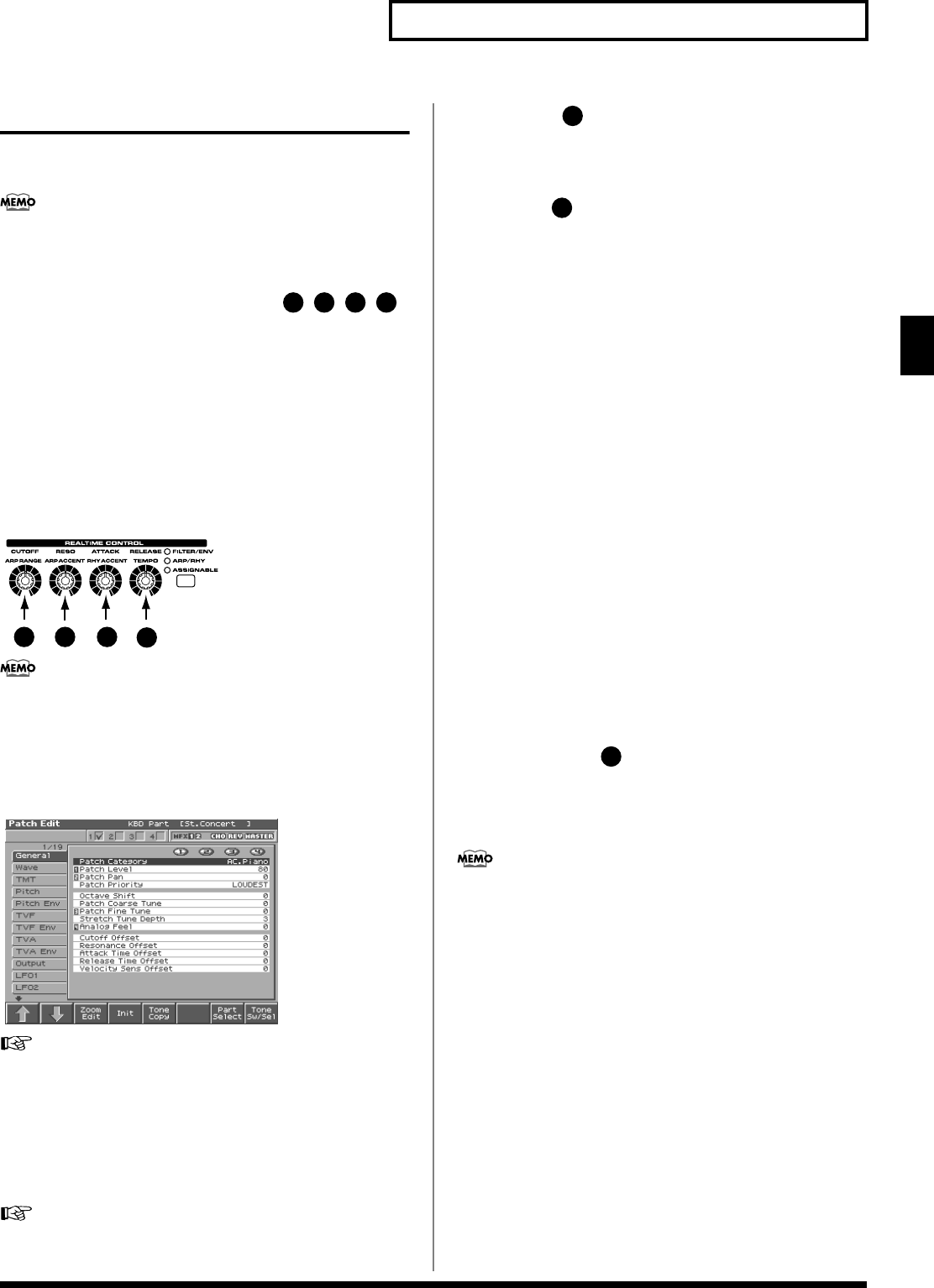
43
Creating a Patch
Creating a Patch
Functions of Patch Parameters
This section explains the functions the different patch parameters
have, as well as the composition of these parameters.
Parameters marked with a “
★
” can be controlled using specified
MIDI messages (Matrix Control). Settings in the Control screen
will determine how these parameters are controlled (p. 61).
If a number is displayed for the parameter name, ( , , , ),
you can use the realtime controller knob of the corresponding number
(the left most knob is number 1, the right most knob is number 4) to set
the value.
When you enter the Patch Edit screen, the indicator at the right of the
Realtime Control knobs will go out, and the Realtime Control knobs
can be used to edit the parameters of the patch or rhythm set. If you
once again press the button located at the right of the Realtime
Control knobs to make the indicator light, the knobs will control
their original functions. When you exit the Patch Edit screen, the
indicator will automatically return to its previous lit state.
fig.knob edit
You can use the same knobs to edit the values in the Zoom Edit
screen as well.
Settings Common to the Entire Patch
(General)
fig.03-01_50
For details on the setting, refer to
“How to Make the Patch
Settings”
(p. 39).
Patch Category
Specifies the type (category) of the patch.
It also determines the phrase that will be sounded when using the
Phrase Preview function.
For details on the possible category names, refer to (p. 30).
Patch Level
Specifies the volume of the patch.
Value:
0–127
Patch Pan
Specifies the pan of the patch. “L64” is far left, “0” is center, and
“63R” is far right.
Value:
L64–0–63R
Patch Priority
This determines how notes will be managed when the maximum
polyphony is exceeded (64 voices).
Value
LAST:
The last-played voices will be given priority, and
currently sounding notes will be turned off in order,
beginning with the first-played note.
LOUDEST:
The voices with the loudest volume will be given
priority, and currently sounding notes will be turned off,
beginning with the lowest-volume voice.
Octave Shift
Adjusts the pitch of the patch’s sound up or down in units of an
octave (+/-3 octaves).
Value:
-3– +3
Patch Coarse Tune
★
Adjusts the pitch of the patch’s sound up or down in semitone steps
(+/-4 octaves).
Value:
-48– +48
Patch Fine Tune
Adjusts the pitch of the patch’s sound up or down in 1-cent steps (+/
-50 cents).
Value:
-50– +50
One cent is 1/100th of a semitone.
Stretch Tune Depth
This setting allows you to apply “stretched tuning” to the patch.
(Stretched tuning is a system by which acoustic pianos are normally
tuned, causing the lower range to be lower and the higher range to
be higher than the mathematical tuning ratios would otherwise
dictate.) With a setting of “OFF,” the patch’s tuning will be equal
temperament. A setting of “3” will produce the greatest difference in
the pitch of the low and high ranges.
Value:
OFF, 1–3
The diagram shows the pitch change relative to equal temperament
that will occur in the low and high ranges. This setting will have a
subtle effect on the way in which chords resonate.
1 2
3 4
3
4
21
1
2
3
Reference_e.book 43 ページ 2003年7月14日 月曜日 午後3時25分


















